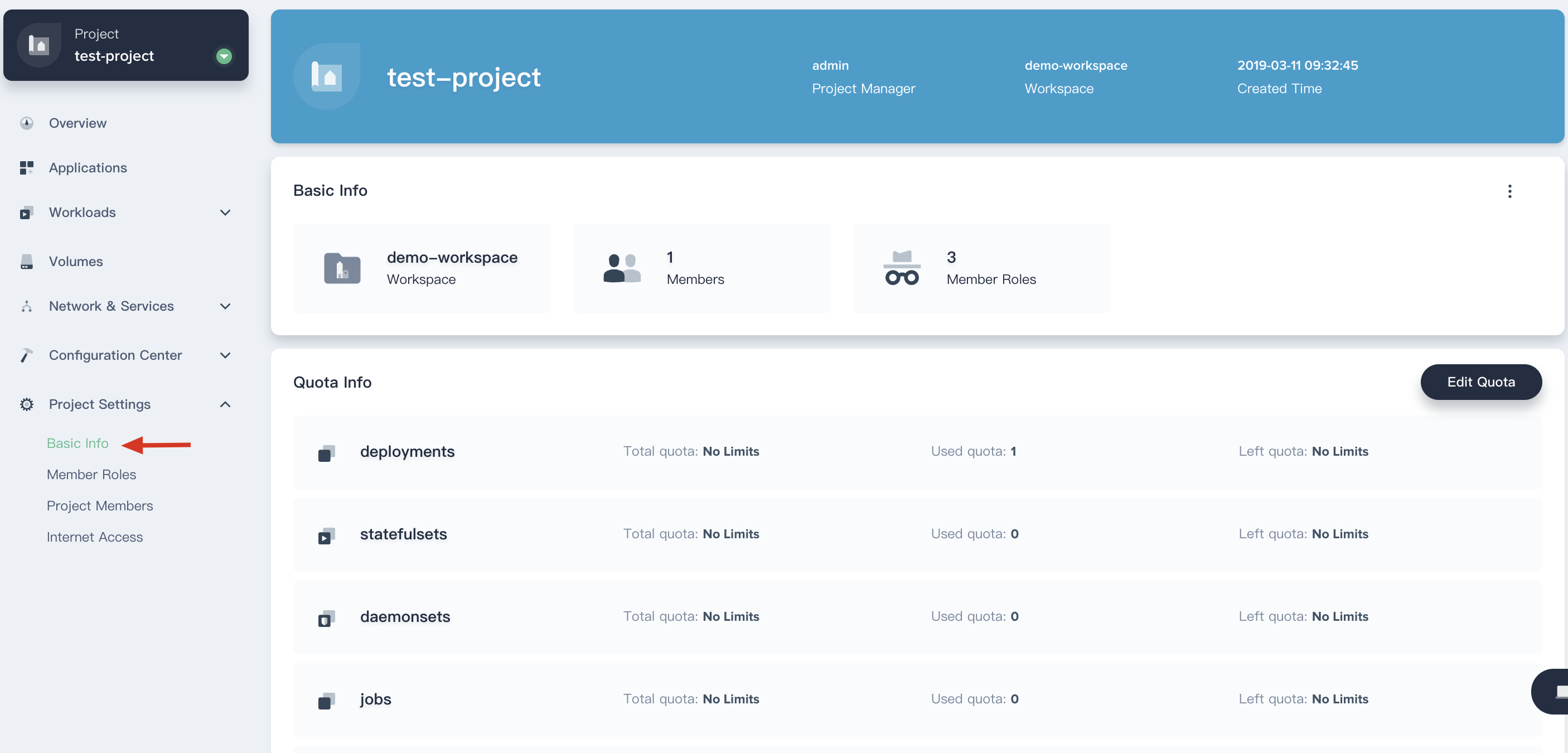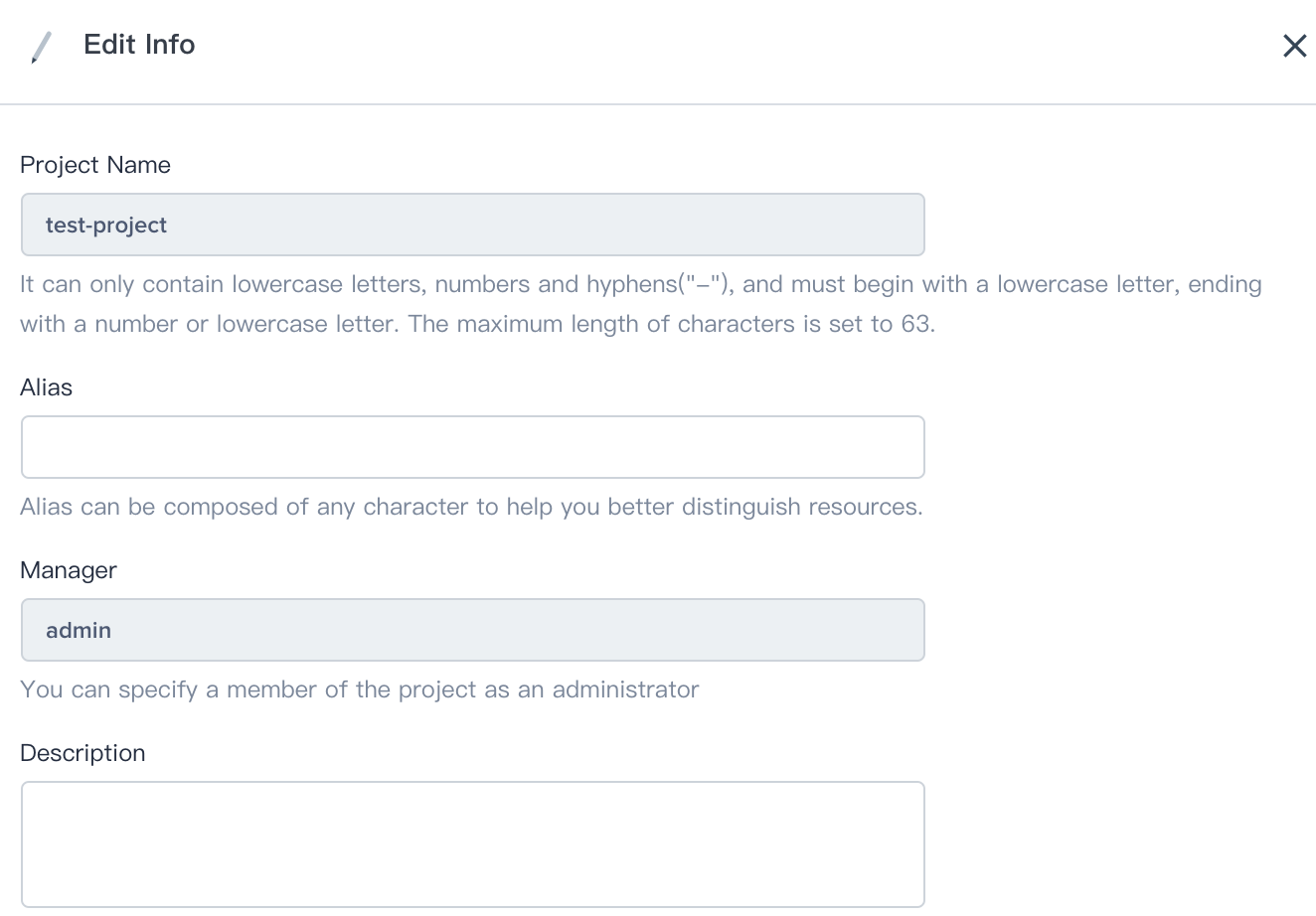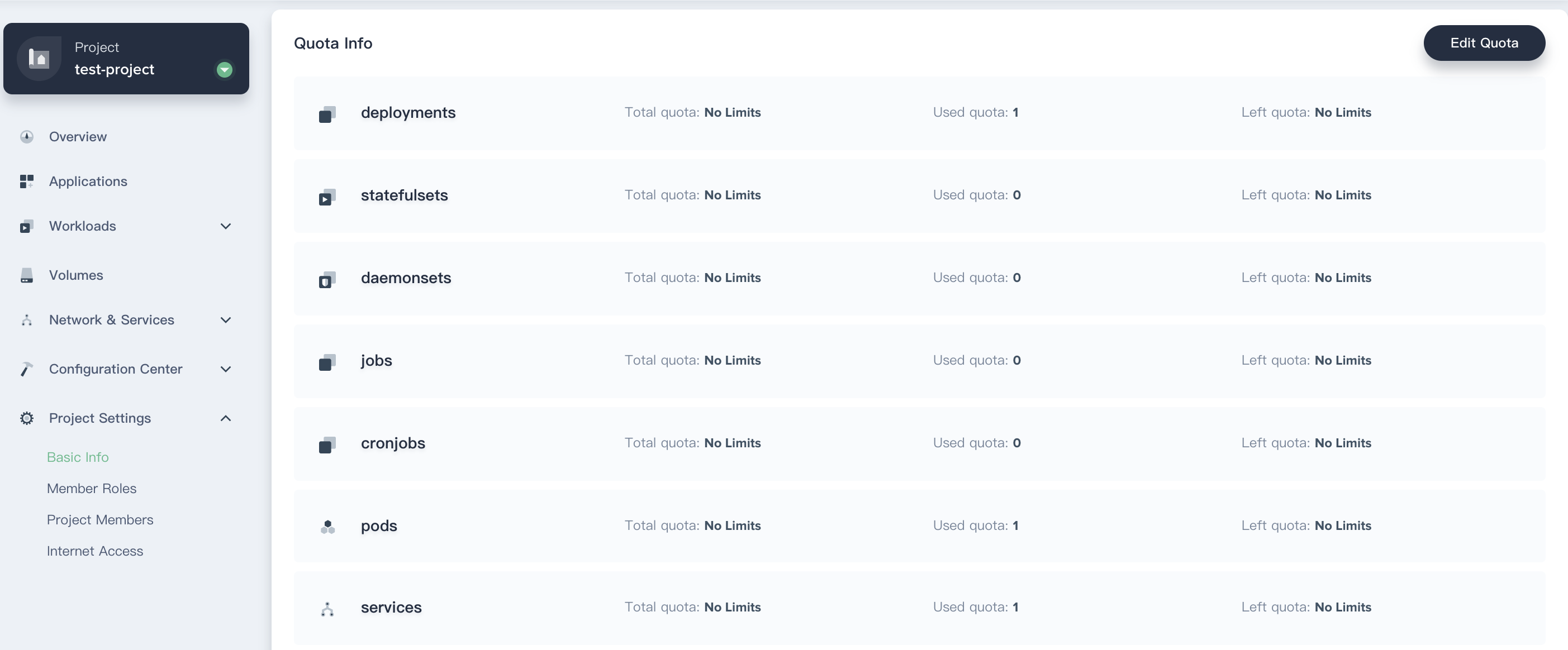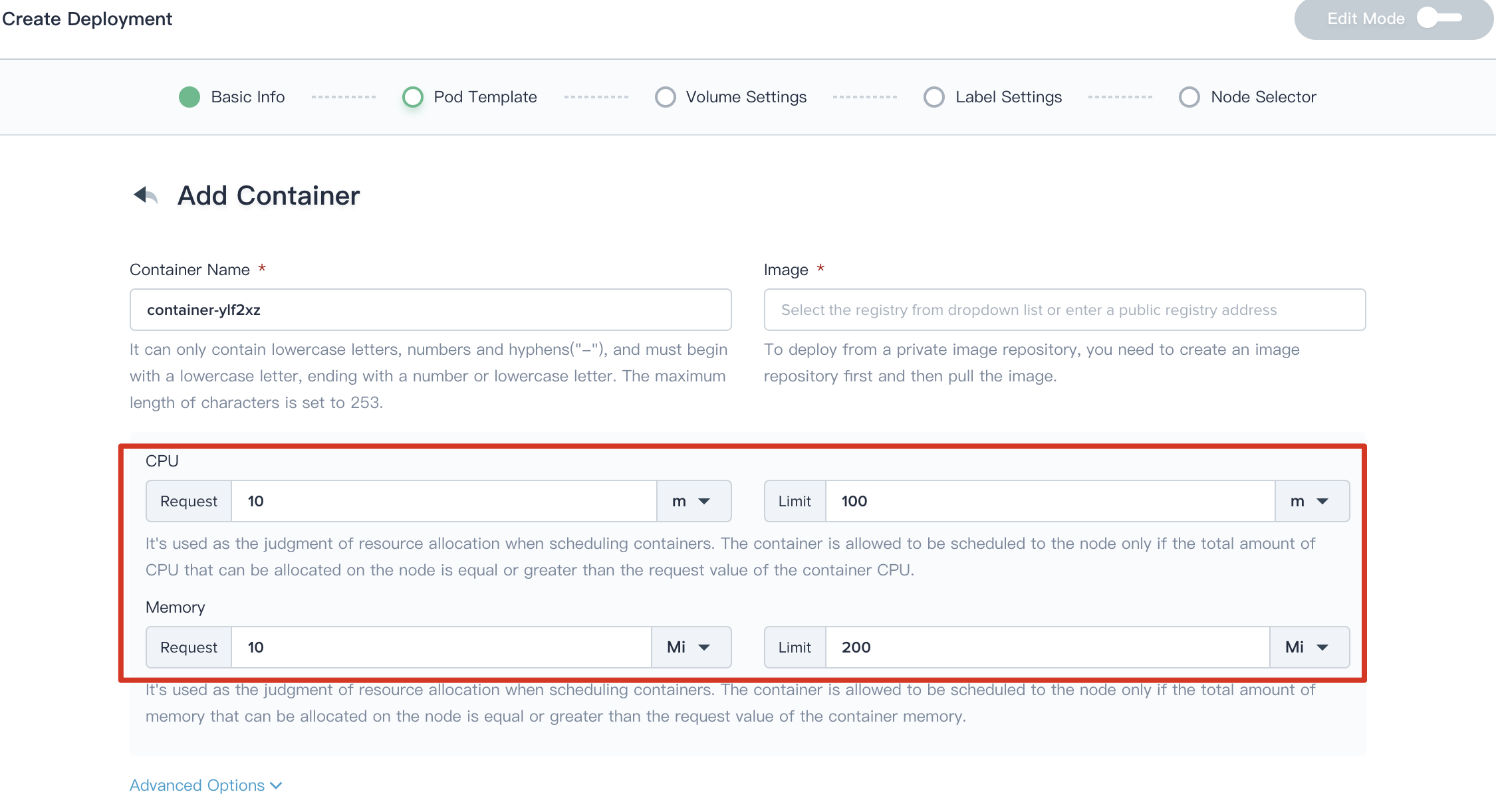Installation
Intruction
Install on Linux
Install on Kubernetes
Related Tools
Cluster Operation
Quick Start
Cluster Admin Guide
Multi-tenant Management
Platform Management
Infrastructure
Monitoring Center
User Guide
Storage
Configuration Center
Project Settings
Development Guide
API Documentation
Basic Information
The basic information supports managing the following resources information of the current project:
- Basic information
- Resource quota
- Resource requests and limits
The quota information management is designed for the project level and is used to limit the resource usage within the project. The resource request and limits are designed for the container level. When you create a workload, by default the container's CPU and memory requests and limits will use the value which is set in the default request and limits.

Basic Information
Click "···", Select Edit Info to modify the alias and description of the project.


Quota Management
By default, the usage limit for resources is not set in the project. Quota management supports setting limits on multiple types of resources such as workload, CPU, memory, etc. Click on Edit Quota to set the upper limits for each resource.

Resource Request and Limits
When creating a project, the admin has set a resource default request for the project. It's designed for the container level. If you need to modify the request and limits for resources, click "···" Select Edit .

For example, when creating a deployment, in the advanced options of the container group template, if you do not fill in the CPU and memory requests and limits values, then the resource request and limit values for these two items default to the values set in the above figure.
